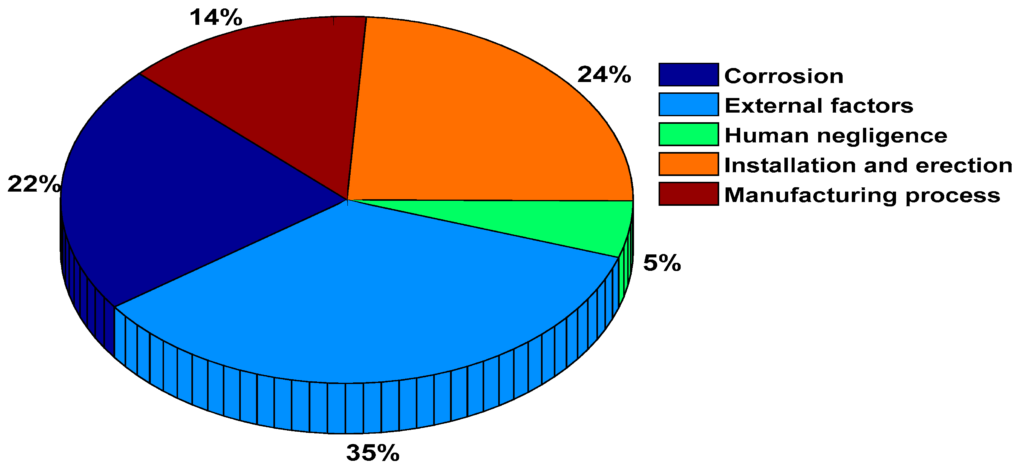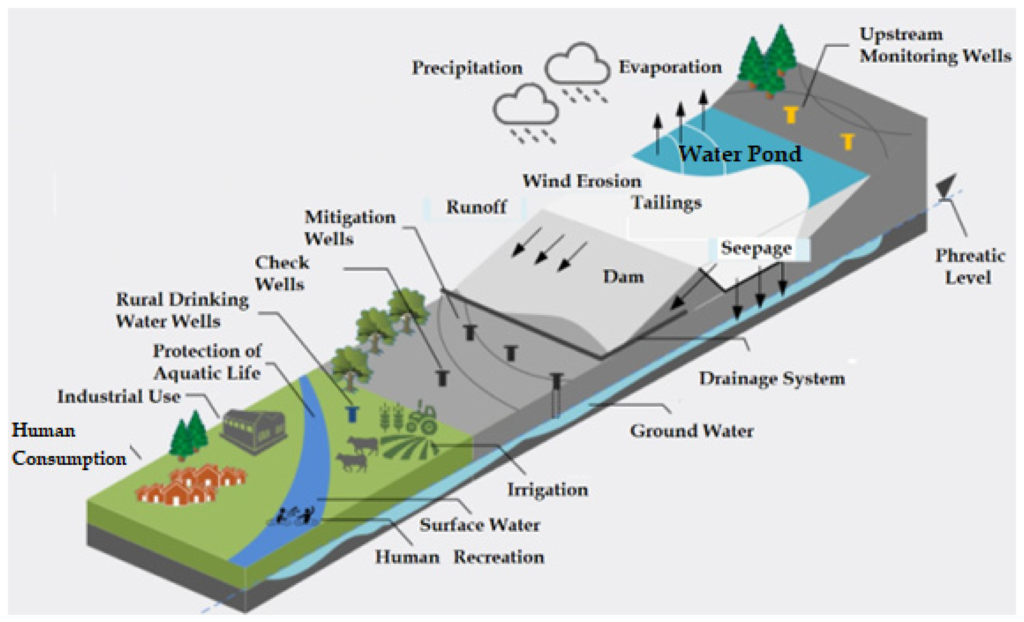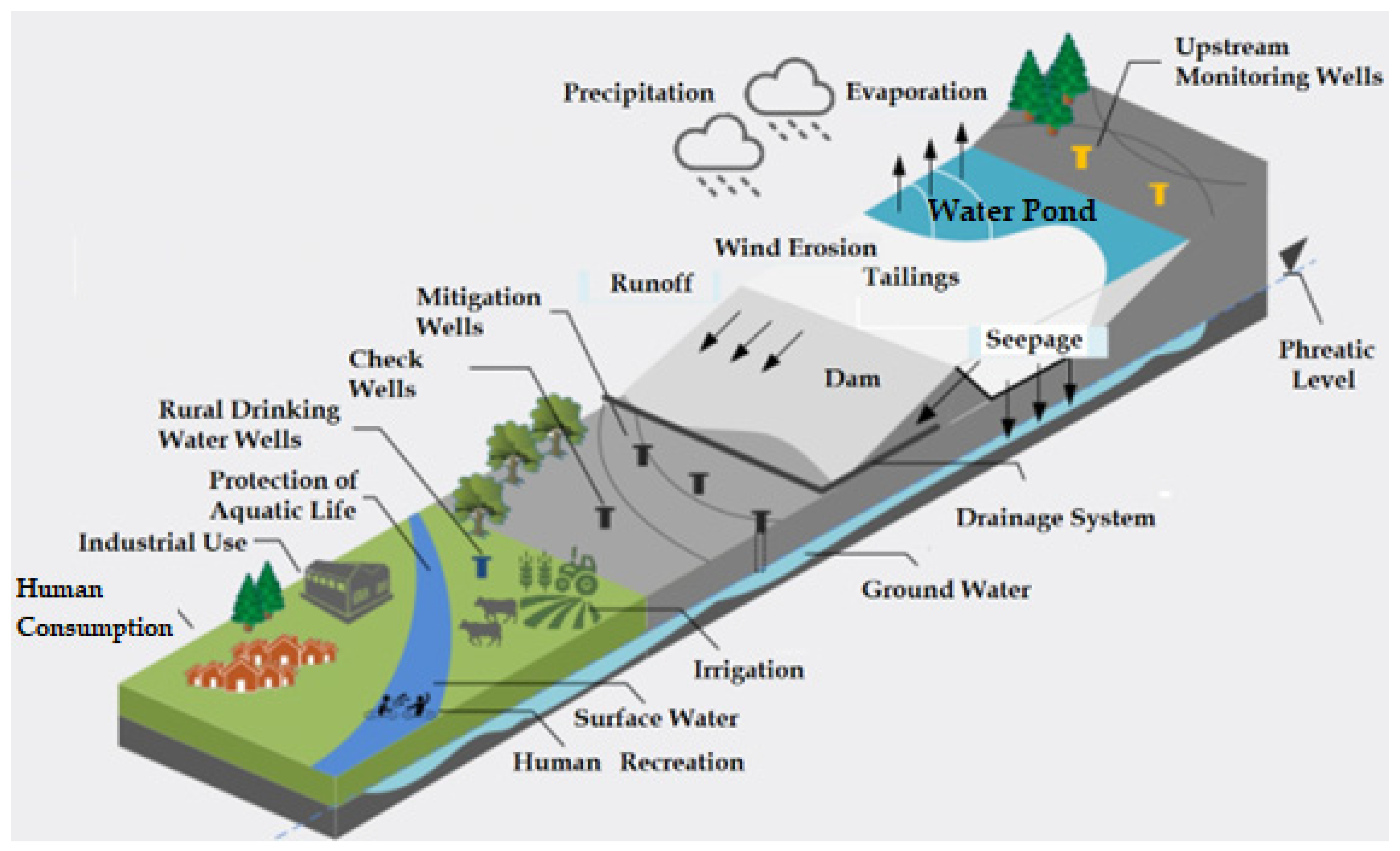“The Impact of Leaks on Structural Stability Over Time” explores the profound repercussions that leaks can have on the long-term integrity of structures. With a relentless focus on understanding the exact duration it takes for a leak to lead to significant structural damage, this article sheds light on an often overlooked aspect of building maintenance. By examining various factors such as the type of leak, its location, and the material composition of the structure, we uncover crucial insights that will help architects, builders, and property owners mitigate the risks associated with leaks and ensure the durability of their creations.

This image is property of pub.mdpi-res.com.
Introduction
Leaks in any building can have significant consequences, particularly when it comes to the structural stability of the property. In this article, we will explore the definition of leaks and the importance of structural stability. We will delve into the different types of leaks, their causes, early signs, immediate impacts, and long-term effects. Furthermore, we will discuss the factors that affect the timeline of structural damage caused by leaks. Lastly, we will provide valuable insights into prevention and maintenance strategies, and explore case studies that highlight the consequences of neglecting leak issues.
Definition of Leaks
Leaks refer to the unintentional escape or seepage of liquid, such as water, from a designated containment area. When it comes to buildings, leaks can occur in various areas, such as the roof, plumbing systems, or foundation. These leaks can lead to water infiltrating the building’s structures, which in turn can cause severe damage over time if not addressed promptly.
Importance of Structural Stability
Structural stability is a fundamental aspect of any building’s integrity. Without solid structural components, a building becomes vulnerable to collapse and poses a risk to its occupants. Thus, maintaining the structural stability of a building is crucial to ensure its longevity, safety, and functionality.
Types of Leaks
Roof leaks
Roof leaks are among the most common types of leaks in residential and commercial buildings. They can occur due to various factors, such as aging materials, poor installation, or severe weather conditions. Roof leaks not only lead to water damage but can also compromise the overall structural integrity of the building.
Plumbing leaks
Plumbing leaks can occur in both residential and commercial buildings, and they often go unnoticed until visible signs of damage manifest. These leaks can emerge from broken or damaged pipes, faulty fixtures, or improper installation. If left unattended, plumbing leaks can lead to extensive water damage and compromise the structural stability of the building.
Foundation leaks
Foundation leaks occur when water infiltrates the foundation of a building. This can happen due to inadequate waterproofing, improper drainage systems, or cracks in the foundation walls. Foundation leaks not only pose a risk to the building’s stability but can also contribute to mold growth and other structural issues if not addressed promptly.

This image is property of www.buildingconservation.com.
Causes of Leaks
Age and deterioration
Over time, the materials used in a building’s construction can deteriorate due to wear and tear. Aging components, such as roofing materials or plumbing pipes, become more susceptible to leaks and failures. Regular maintenance and timely replacements can help mitigate the risks associated with age-related deterioration.
Poor construction or design
Poor construction practices or design flaws can contribute to the occurrence of leaks. The use of subpar materials, improper installation techniques, or inadequate waterproofing can all lead to increased vulnerability to leaks. Building owners and contractors must prioritize proper construction methods and adhere to industry standards to avoid potential leaks.
Extreme weather conditions
Extreme weather events, such as heavy rainstorms or hurricanes, can put immense pressure on a building’s structures and exacerbate existing vulnerabilities. Strong winds, excessive rainfall, or freezing temperatures can cause leaks to occur or worsen existing ones. Ensuring adequate weatherproofing measures during the initial construction and regular inspections are key to minimizing the impact of extreme weather conditions.
Lack of maintenance
Neglecting regular maintenance and inspections can significantly increase the likelihood of leaks. A lack of routine checks can allow small issues to escalate into more severe problems. Regular maintenance, including tasks such as roof inspections, plumbing system assessments, and foundation checks, is essential for identifying and addressing potential leak sources promptly.
Early Signs of Leaks
Visible water damage
One of the most evident signs of a leak is visible water damage. This can manifest as water stains on walls or ceilings, peeling paint, or bubbling wallpaper. Any unexplained discoloration or moisture buildup should be investigated further to determine the source of the leak.
Mold and mildew growth
Leaks often create the perfect environment for mold and mildew to thrive. If there is a noticeable presence of mold or an unpleasant musty odor, it could be an indication of a hidden leak. Mold growth not only compromises the air quality within the building but also contributes to structural deterioration over time.
Unpleasant odors
Alongside mold growth, leaks can lead to unpleasant odors within a building. Damp environments provide a breeding ground for bacteria and other microbes that emit foul smells. Addressing these odors promptly can help identify and rectify any underlying leak issues.
Discoloration of walls or ceilings
Discoloration, such as yellow or brown stains, on walls or ceilings can indicate water infiltration. These marks often appear in areas where leaks have occurred or are occurring. Discoloration should not be ignored, as it suggests ongoing damage that can impact the structural stability of the building.

This image is property of pub.mdpi-res.com.
Immediate Impact of Leaks
Weakening of structural components
Leaks can compromise the structural components of a building, leading to a gradual weakening of the overall structure. Water intrusion can weaken wooden beams, corrode metal supports, or erode concrete foundations. If left unaddressed, this can result in serious structural damage, jeopardizing the safety of the occupants.
Compromised integrity of building materials
When water infiltrates building materials such as drywall, insulation, or flooring, their integrity is compromised. These materials can warp, rot, or deteriorate, affecting the functionality and aesthetics of the building. Not only does this necessitate costly repairs or replacements, but it can also pose safety risks if the materials fail to provide adequate support.
Increased risk of collapse
Persistent leaks can gradually erode the stability of a building, increasing the risk of collapse. The weakened structures, whether it be a roof, wall, or foundation, may eventually give way under the added stress. This poses significant danger to the occupants and may result in tragic consequences.
Electrical hazards
Water and electricity do not mix well, and leaks can introduce a serious electrical hazard. If water comes into contact with electrical wiring or appliances, it can lead to short circuits, fires, or even electrocution. Proper insulation and electrical system maintenance are vital to prevent these potential risks.
Long-Term Effects of Leaks
Degradation of building materials
Leaks, if left unaddressed, can lead to the gradual degradation of building materials. Continuous exposure to water can cause materials to rot, corrode, or warp over time. This degradation can compromise the structural stability of the building and necessitate extensive repairs or replacements.
Structural deformation
As leaks persist, the structural elements of a building can begin to deform. This deformation can manifest as sagging walls, uneven floors, or shifting foundations. Not only does this compromise the aesthetics of the building, but it also poses risks to the safety of the occupants.
Loss of insulation efficiency
Leaks can impact the insulation efficiency of a building. If water infiltrates insulation materials, their ability to retain heat or cold is greatly reduced. This can result in increased energy consumption and decreased comfort levels within the building, leading to higher utility bills.
Costly repairs and renovations
Undoubtedly, leaks lead to costly repairs and renovations. Not only will the source of the leak need to be identified and addressed, but the resulting damage to structural components and building materials will also require attention. These repairs can be time-consuming, disruptive, and financially burdensome.

This image is property of i1.rgstatic.net.
Factors Affecting Structural Damage Timeline
Severity and frequency of leaks
The severity and frequency of leaks directly impact the timeline of structural damage. A minor leak that is promptly addressed may cause minimal damage, whereas frequent and significant leaks can rapidly lead to structural deterioration.
Location and extent of leaks
The location and extent of leaks within a building can also affect the timeline of damage progression. Leaks in critical areas, such as load-bearing walls or the foundation, can cause more immediate and severe structural damage compared to leaks in less vital areas.
Building materials and construction quality
The choice of building materials and the quality of construction play a significant role in determining the speed at which leaks lead to structural damage. Well-built structures using high-quality materials may withstand leaks for longer periods before experiencing notable deterioration.
Climate and environmental conditions
The climate and environmental conditions in which a building is located can impact the timeline of structural damage caused by leaks. Harsh climates, with frequent rainfall or extreme temperatures, can expedite the deterioration of building materials and exacerbate the effects of leaks.
Prevention and Maintenance
Regular inspections and repairs
Regular inspections and timely repairs are essential for preventing structural damage caused by leaks. Building owners should schedule routine inspections of the roof, plumbing systems, and foundation to catch potential leaks early on. Prompt repairs can address issues before they escalate, ensuring the structural stability of the building remains intact.
Proper building maintenance
Proper maintenance of a building is an integral part of leak prevention. This includes tasks such as cleaning gutters, maintaining proper drainage systems, and ensuring waterproofing measures are in place. Regular maintenance helps identify potential vulnerabilities and allows for proactive measures to mitigate leak risks.
Waterproofing measures
Implementing waterproofing measures during the construction phase or as part of renovations is vital for preventing leaks. This includes applying waterproof coatings, installing drainage systems, and sealing vulnerable areas. Proper waterproofing can significantly reduce the likelihood of leaks and subsequent structural damage.
Installation of leak detection systems
Installing leak detection systems can provide early warnings for potential leaks. These systems utilize sensors that detect the presence of moisture or changes in humidity. With prompt alerts, building owners can take immediate action to address leaks and prevent further structural damage.

This image is property of www.mdpi.com.
Case Studies
Leak-induced structural failures
Numerous examples highlight the catastrophic consequences of neglecting leak issues. In a case study of a residential building, prolonged water leaks from the roof and plumbing systems led to severe structural damage. The weakened structures eventually gave way, resulting in the collapse of multiple floors. This tragic incident emphasized the necessity of proactive leak prevention and maintenance.
Success stories of leak prevention
On the other hand, success stories demonstrate the importance of addressing leaks promptly and implementing preventive measures. In a commercial building case study, regular inspections and comprehensive maintenance prevented leaks from developing into structural issues. The implementation of a robust waterproofing system also ensured the building remained water-tight, even during heavy rainstorms.
Conclusion
In conclusion, leaks have a significant impact on the structural stability of buildings over time. Understanding the different types of leaks, their causes, early signs, immediate impacts, and long-term effects is crucial for building owners and occupants. By recognizing the factors that affect the timeline of structural damage caused by leaks, proactive prevention and maintenance strategies can be implemented. Investing in leak prevention measures and promptly addressing leak issues are essential for safeguarding the long-term structural stability of a building.
